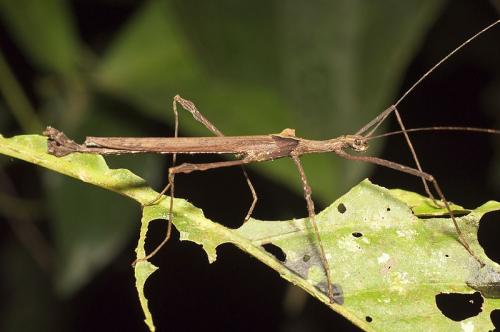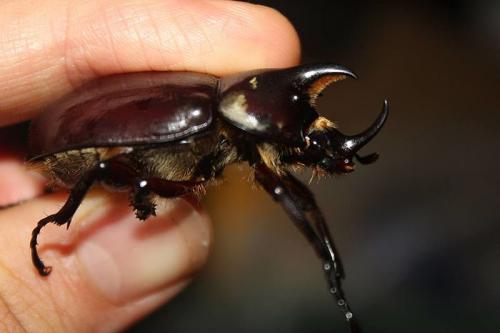Common Pet Invertebrate Species
While most people find animals outside of the mammal, bird, fish and most of the reptile category quite disturbing or creepy, some people can see the hidden beauty of these animals; invertebrates in particular.
There's just something that's incredibly fascinating about life forms that are so alien to the features we would recognize in animals that most people deem to be cute.
Characteristics such as claws, protruding mandibles, iridescent shells, multiple or no legs, variable life stages and other species specific traits that captivate bug keepers all over the world.
Let's take a look at some of the most common pet invertebrate species that are kept by hobbyists, collectors and breeders and you may find at least one will captivate you!
Invertebrates Definition
Before we begin it would be a good idea to clarify exactly what an invertebrate is to avoid any confusion.
The main identifying factor of an invertebrate is that they do not possess a spine (also known as a vertebral column or backbone). This also means that they have a different nervous system to ours, since, in vertebrates the spine is protective of the spinal cord, a highly important element of the vertebrate nervous system.
Whether or not an organism is an invertebrate or a vertebrate is not used in the hierarchy of classification of life. This is because it only applies to the kingdom of Animalia, it does not describe plants or bacteria for example.
It's also not a specific description of any particular phylum. Most people think of arthropods (insects, arachnids, crustaceans) when they think of invertebrates because they are taught that an exoskeleton is necessary; but molluscs, nematodes, echinoderms (starfish, etc) among others are also described as invertebrates.
Pet owners tend to keep enclosures for different kinds of invertebrates completely separate, for obvious reasons. So they will have an aquarium for their marine invertebrates and vivarium's for their terrestrial (on land), arboreal (in trees) and fossorial (underground) invertebrates.
In this article we will be focusing on the types of invertebrates that you would keep in a vivarium and not those that live in the water.
Popular Pet Invertebrates
Stick and Leaf Insects (Phasmids)
A group of insects that are commonly called stick and leaf insects but in taxonomic terms, they belong to a common group known as Phasmatodea.
They are seen as the ideal beginner invertebrate pet for kids because they are relatively easy to keep and maintain, and they're not fast movers nor are they aggressive at all, so squeamish parents need not worry too much about escapees.
They have evolved to resemble sticks and leaves and they so very effectively giving them a camouflage that successfully hides them in plain sight. As a result of their defensive nature, they are very timid and fragile but can be handled if you are careful.
They are herbivorous and only eat plant matter making them pretty easy to feed. They will eat most green plant matter that you give them and avoid anything that's toxic to them but the leaves they like to eat will depend on the exact species you have.
Praying Mantis (Mantids)
There are many species of praying mantis, and they are a highly popular pet. Those who keep them admire the way that they move, hunt and the beautiful colors that they display. They belong to a common group taxonomically known as Mantidae whose closest relative are surprisingly termites!
Mantids are carnivorous, have a highly developed eyesight and superior reflexes being quick to strike their pray with the spikes on their forelegs, which traps the prey for the mantis to eat. They only prey on other insects and as is well known, members of their own species.
They primarily rely on ambush predation, preferring to camouflage themselves in foliage that matches their own coloration. They lie in wait for prey to approach and pick opportune moments to strike.
Mantids are famous for their sexual predation, with the female of the species being much larger than the male. When it comes to mating, the male is in a very precarious position and often finds himself on the female's dinner menu.
Since mantids are cannibalistic, it's not always wise to keep them together in the same enclosure, but this is dependent on species. They are fed live insects such as crickets and locusts.
A common species of mantis: Hierodula patellifera.Rhinoceros Beetles (Dynastinae)
Rhinoceros beetles are a beautiful group of insects that belong to the same family as scarab beetles (Scarabaeidae). There are over 300 species of rhinoceros beetle all sporting unique horn shapes, sizes and coloration which are adored by collectors.
They are strong for their size but they pose no threat to humans at all, as they cannot bite nor sting, and their horns are blunt and used primarily for fights between males over the favour of a female.
In fact, females do not typically have large horns and many do not have horns at all. These beetles like to dig and sometimes spend time underground.
Like all beetles, they begin life in the larval stage and they're requirements differ somewhat form an adult. The larvae will eat rotting wood and plant matter whilst adults are sap eaters in the wild but will consume apple, banana ,sugar based liquids or "beetle jelly" (which can be commercially bought) in captivity.
A common species of rhinoceros beetle: Dynastes tityus.
Tarantulas (Theraphosidae)
Tarantulas are arachnids, and more specifically belong to a group known as Theraphosidae of which there are approximately 900 identified species. They are large, hairy, have intimidating fangs and variable markings ranging from the vibrant to the regal.
Only some of the 900 known species of tarantula are commonly kept as pets due to their docility and low requirements. These include the Chilean Rose (Grammostola rosea), Mexican Redknee (Brachypelma smithi) and Desert Blonde (Aphonopelma chalcodes) among others.
They are not as easy to care for as other invertebrate pets but are appealing companions because they have lifespans that extend over five years and sometimes even reaching 10 years.
What makes tarantulas slightly more difficult to care for is their motility, they are able to move pretty quickly if they want to, and due to their 8 legs are able to overcome many obstacles. It can take some practise to get accustomed to their temperament.
As with all spiders, the bite of a tarantula does contain venom, and the strength of the venom is dependent on species but most are harmless to humans; causing minor irritation at most. Always be aware that allergic reactions to the venom are a possibility however!
Tarantulas will also need to moult, meaning they shed their exoskeleton when they grow too large. It's important to have the correct humidity level for the species in this time as complications can arise when the air is too humid or not humid enough.
A common species of tarantula: Grammostola rosea.
Scorpions (Scorpiones)
Scorpions are another intimidating brand of arachnid that make many people quiver. They have a large pair of pincers at the front of their body for gripping prey and normally a stinger on their tail which extends towards their front end to deliver venom.
There are approximately 1,750 known species of scorpion and only 25 of which can pose a serious threat to a human if stung. Most scorpion stings, especially of those kept as pets are no more painful than a bee or wasp sting causing minor local inflammation and irritation.
As with tarantulas, scorpions can move pretty quickly and so are best kept by those with some experience in keeping invertebrates. A recommended scorpion pet species is the emperor scorpion (Pandinus imperator) as despite being the largest scorpion species, it is relatively docile and have a low powered sting.
Many scorpion species require an optimal level of heat and humidity in their vivarium to keep them healthy and simulate their natural environment. They are strictly carnivorous and can be fed live insects such as crickets and locusts.


